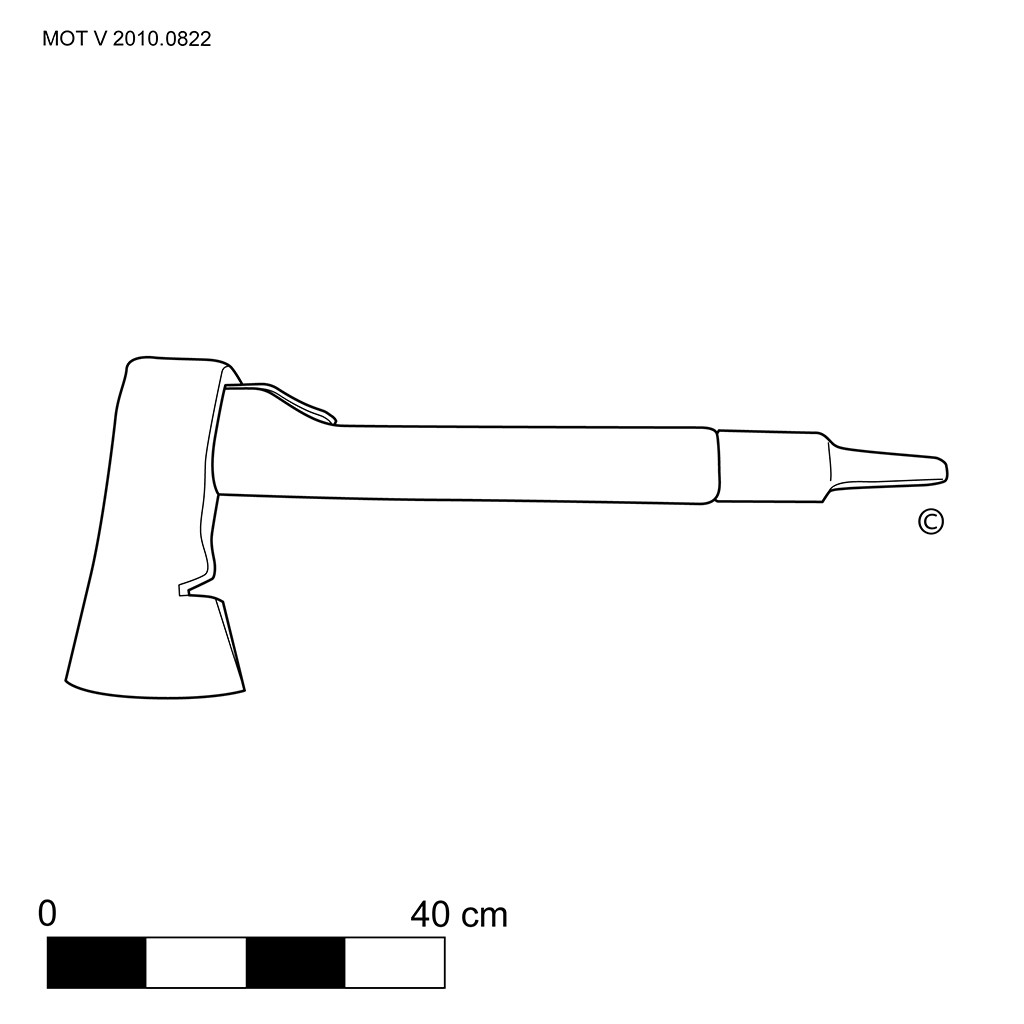Fireman's Axe
MOT V 2000.0473 L=46cm WD=25cm WT=1000gr
The fireman's axe mainly serves to break a door or window, but it is used for all kinds of purposes (1).
Today it closely resembles a woodman's axe. The straight handle often ends in a small sphere to provide a better grip. Often there is a notch at the bottom of the blade to pull out nails and a spring strengthens the connection with the stem (2).
Very common is a pointed axe, i.e. an axe with a heavy point opposite the edge (3). Here too one or two springs are often found. Today there are firefighter's axes made of a non-sparking alloy. The stem can be short (about 35 cm) or long (about 80-90 cm). The short handle often has slight bumps along its entire length to provide a better grip; when isolated, it is usually serrated. The handle of some models ends in a heavy iron point. [MOT]
(1) Eg. to drive a peg of emergency into the wall. Certain models appear in military and security equipment. See also the window-smasher to shatter safety glass in a bus, train or plane.
(2) In most countries there are official standards for fireman's axes. In Belgium it is the N.B.N. 395, issued in 1955.
(3) When such an axe is reused (by a craftsman), the point is sometimes sawn off to obtain a hammer.
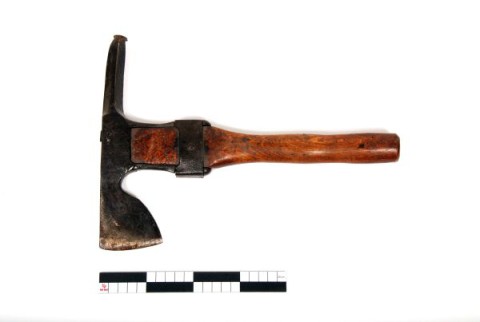
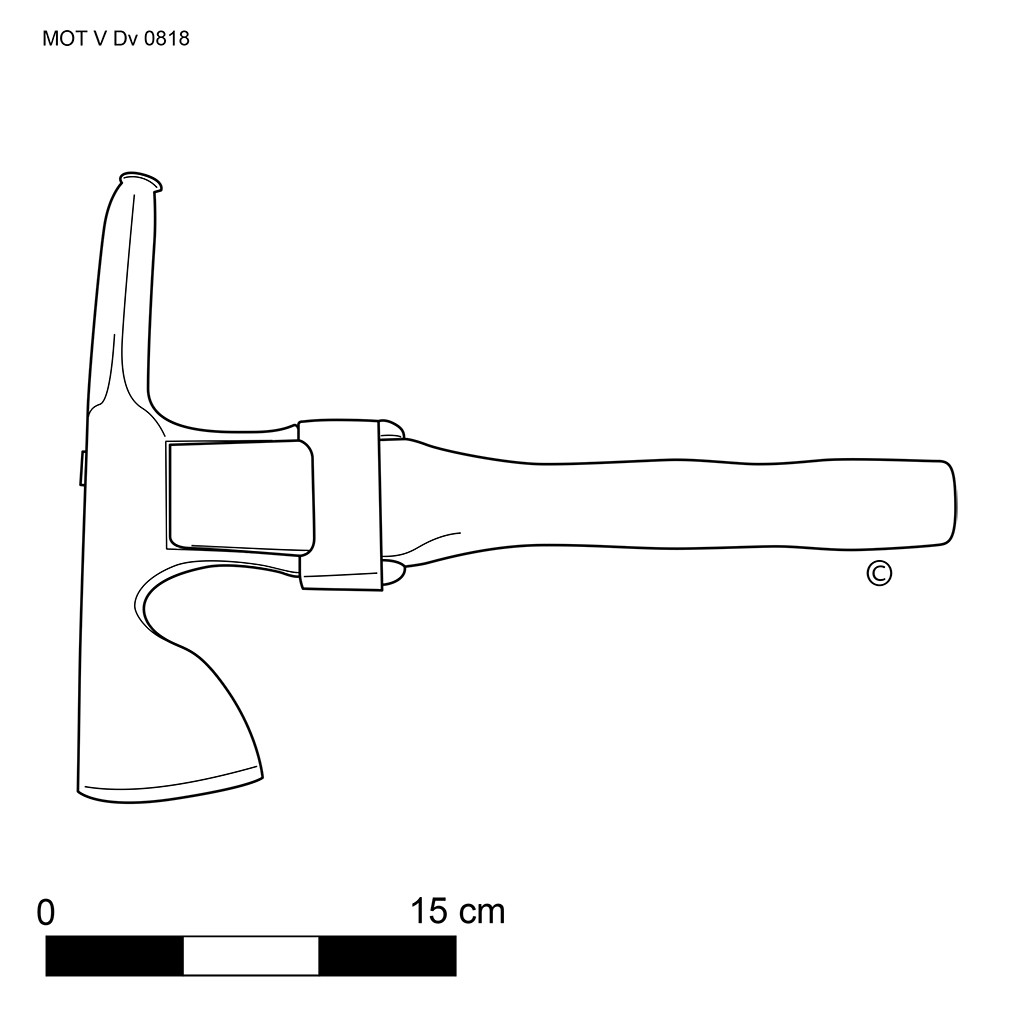
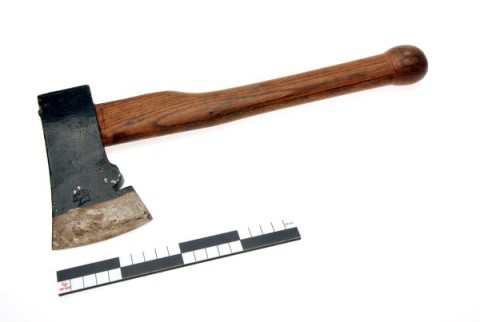
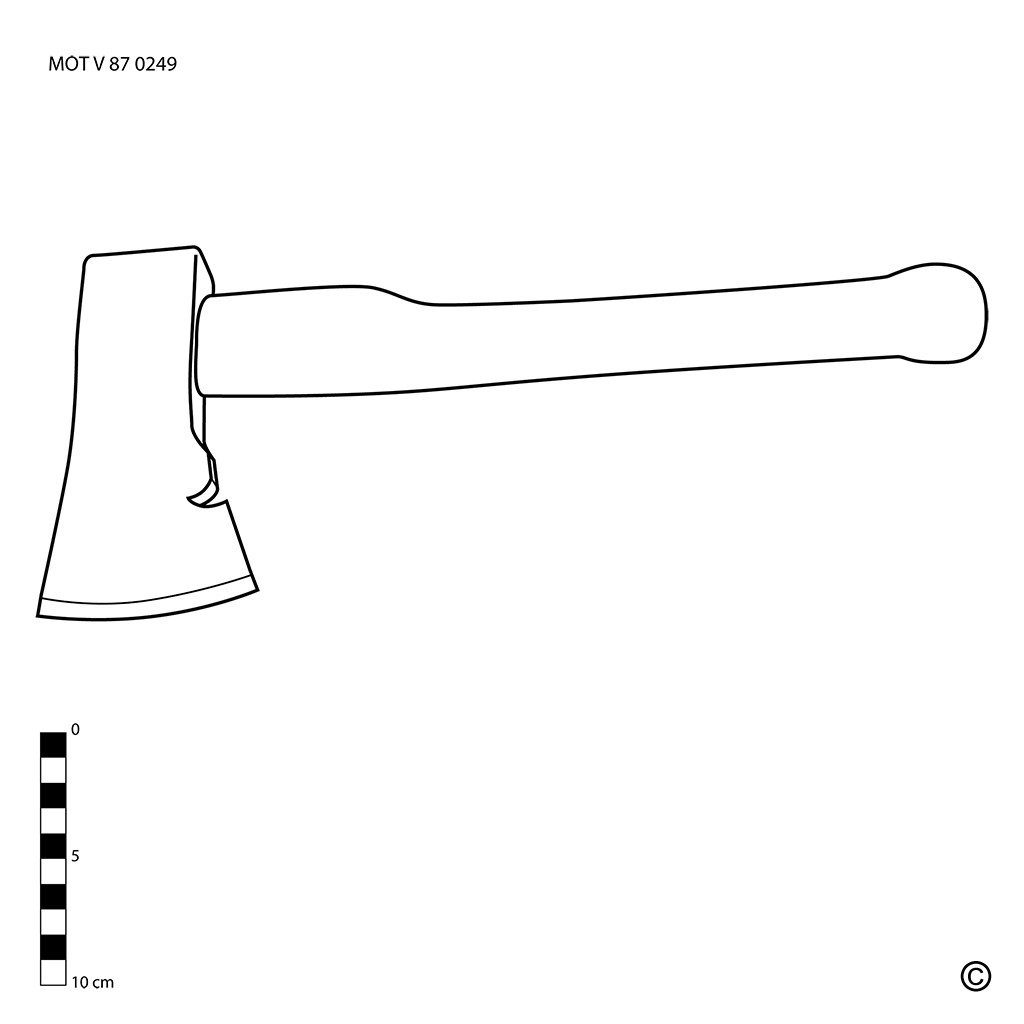
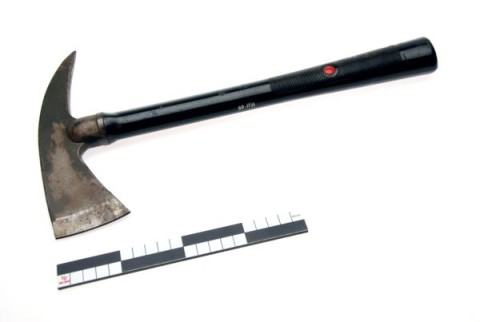
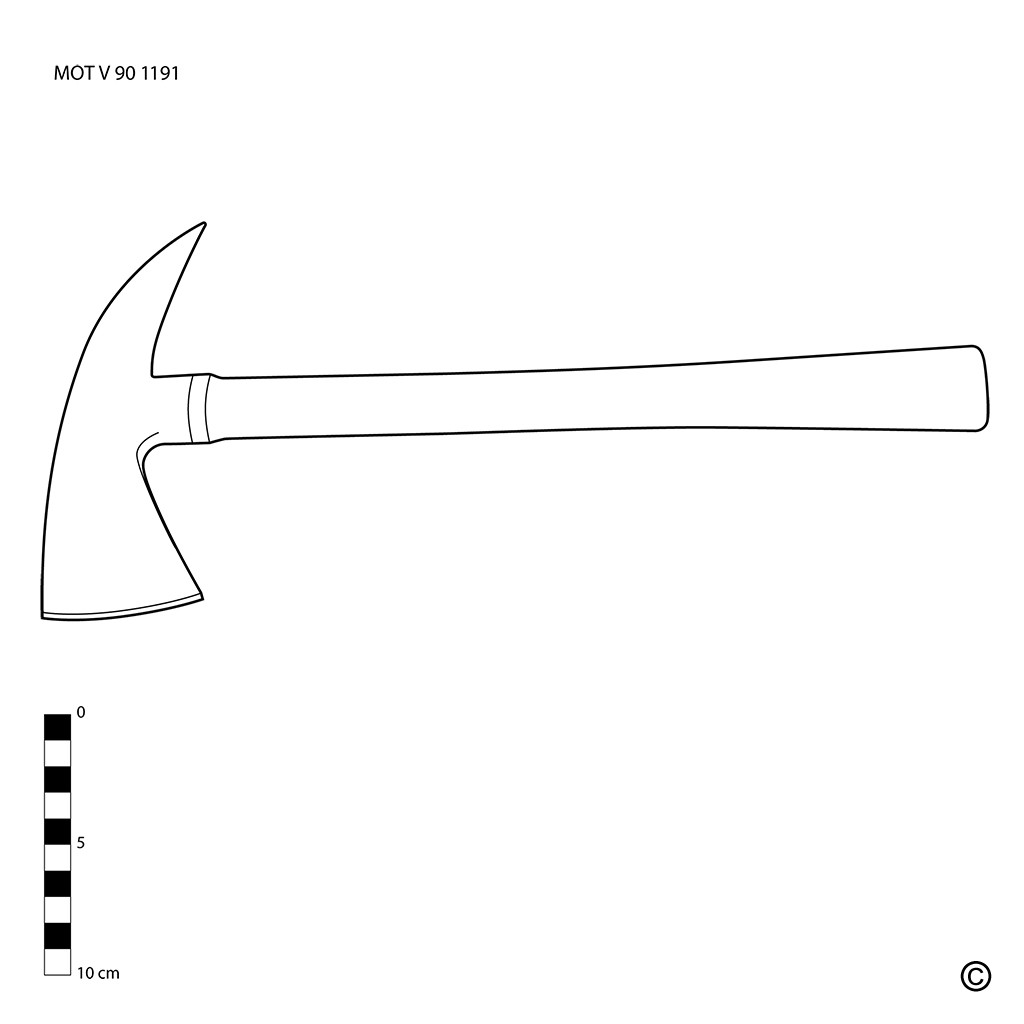
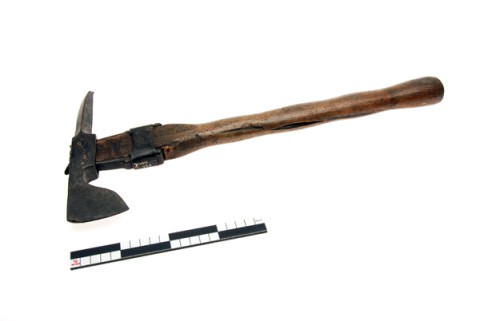
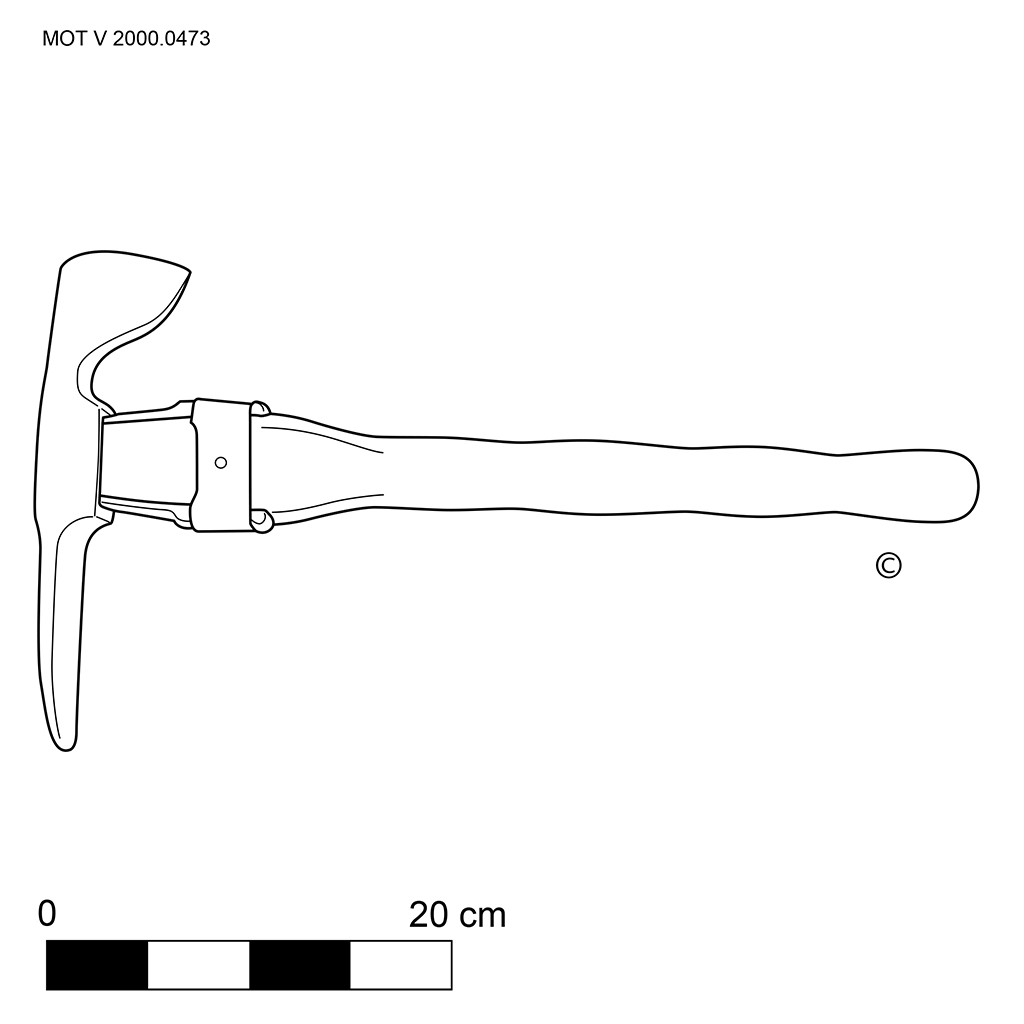
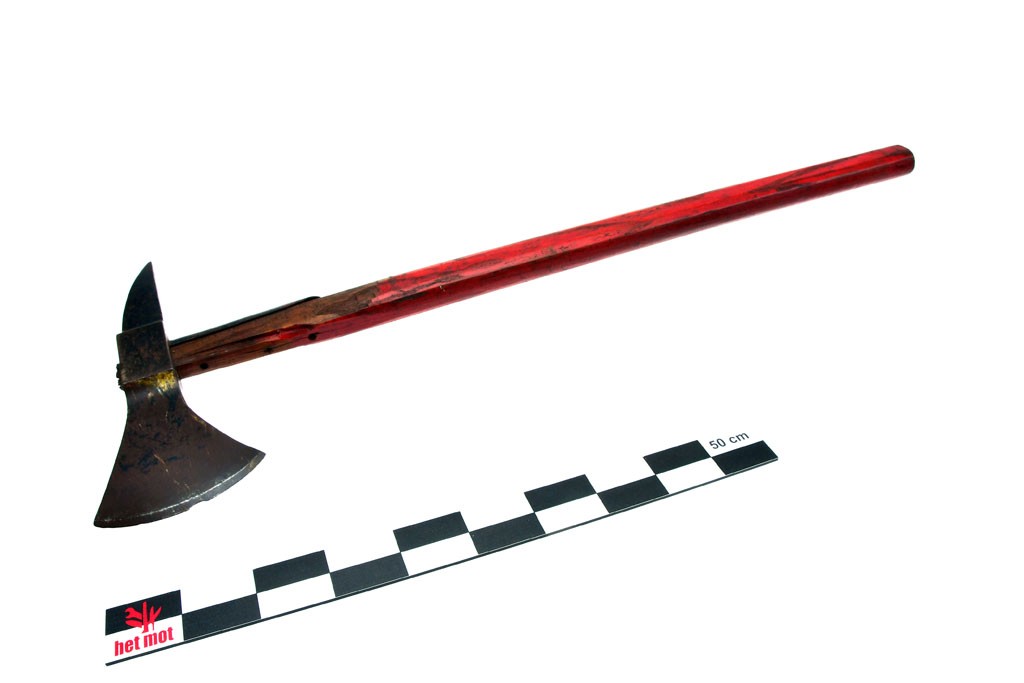
MOT V 2003.0058
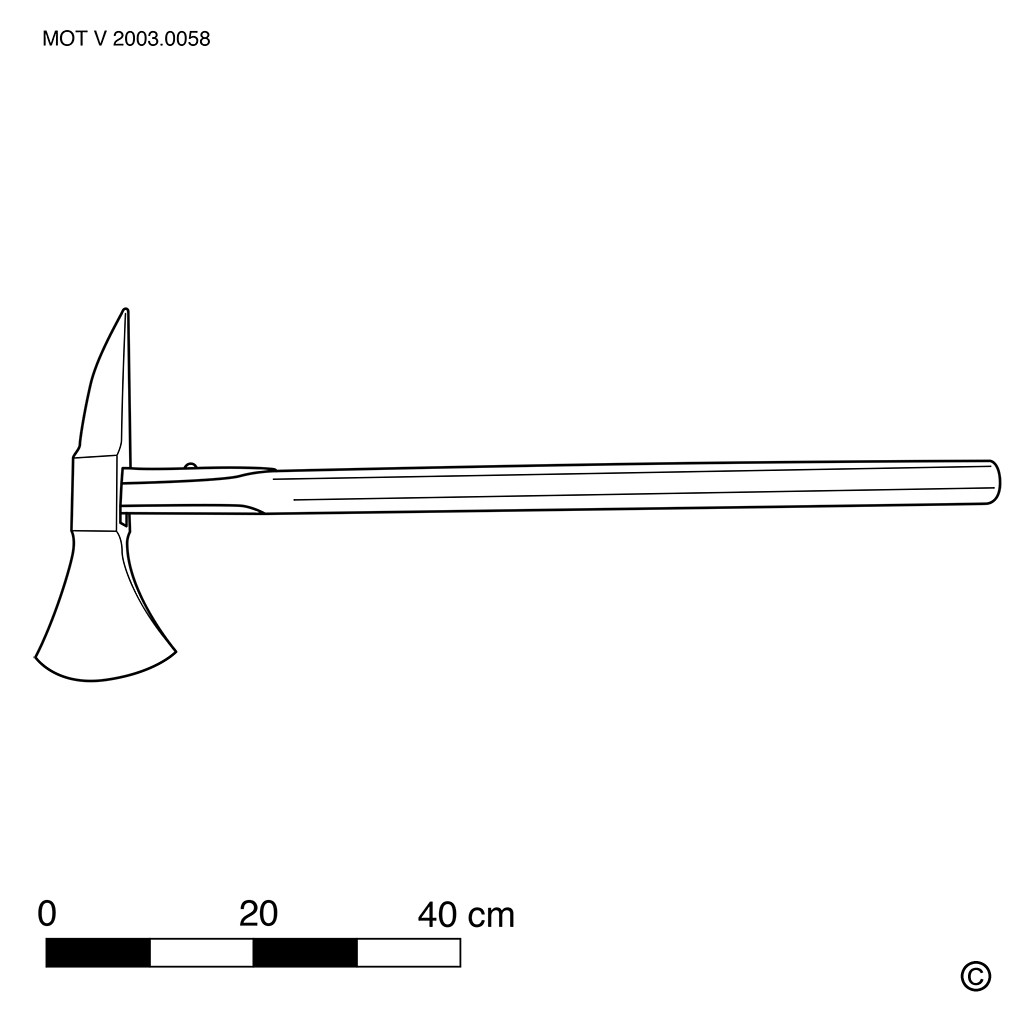
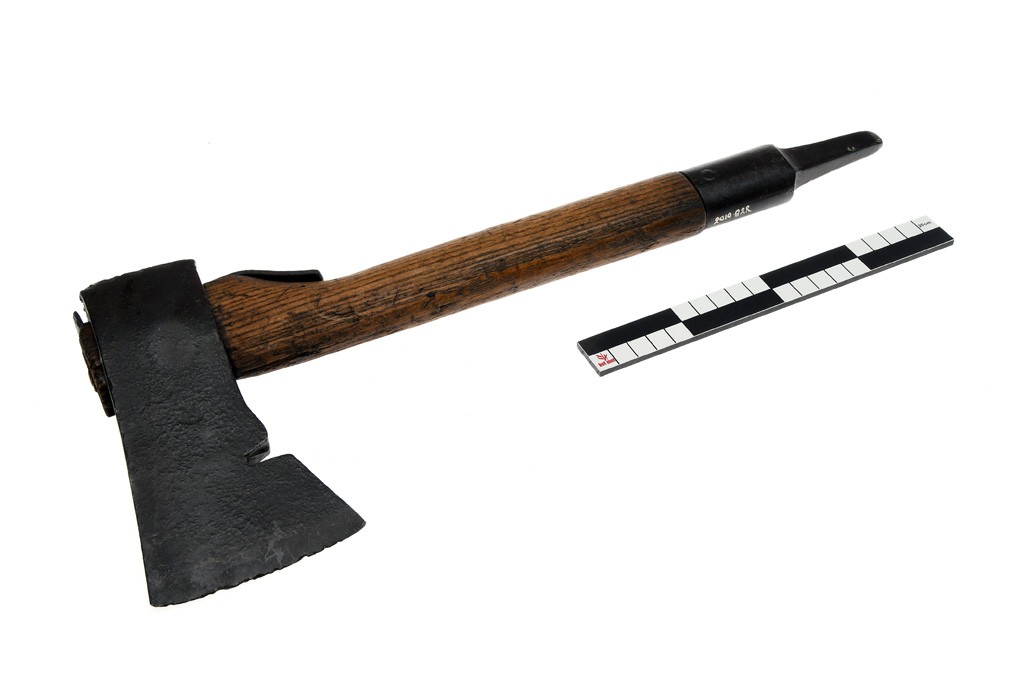
MOT V 2010.0822
